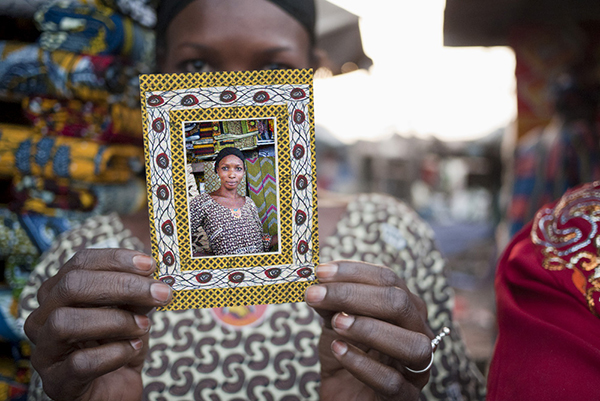
Sometimes all it takes is a certain frame to capture the humanity behind the newscasts.
SUNY New Paltz Photography Professor François Deschamps has provided the campus with a chance to view the West African nation of Mali through a wider lens.
On Saturday, Feb. 2, 257 people attended the opening reception of “Photo-Rapide” and “Malian Portrait Photography,” Deschamps’ exhibits at the Dorsky.
Three years ago, Deschamps received a Fulbright Senior Research Fellowship to live in Mali for a year, for which he was required to teach Malian students at the Conservatoire des Arts et Metiers.
Deschamps said his fluency in French made the trip all the more enjoyable, even when he ran into people who didn’t speak French. In these cases, the power of photography became the unspoken, but mutually understood language, he said.
After completing the teaching position at the Conservatoire, Deschamps set out on a photo expedition with his Lumix digital camera and a portable Polaroid printer.
“It was exciting and heartening to see that people loved the photos and the process of taking them,” Deschamps said. “These photos allowed them to be themselves.”
“Photo-Rapide,” French for “quick photo,” includes photographs of Malian strangers Deschamps met during his travels.
When describing his process, he said he photographed the stranger, printed out their favorite photo and allowed them to choose a patterned border. Then he took another photo of the person holding up their own photo. In the end, each person got to keep their own photos.
“It wasn’t the idea of this white guy coming into another culture and photographing like an ethnographer or an anthropologist, but I saw it much more as an exchange where I gave them something,” Deschamps said.
“Malian Portrait Photography” exhibits portrait photographs from the 1940s through the late 1970s taken by Malik Sidibé and Seydou Keita, two of Mali’s best known portrait photographers, as well as other Malian photographers whose work is being newly premiered on the East Coast.
“Malian Portrait Photography” tells stories of a time when portrait studios were without electricity, so they had to take photographs outside with people wearing vibrant patterns and colors for clearer photos.
Freelance curator Daniel Leers, whose most recent work includes “New Photography 2011” at the Modern Museum of Art in New York, worked with Deschamps to curate “Photo-Rapide” and “Malian Portrait Photography.”
Leers visited Deschamps’ studio to view the photos he took during his Fulbright and connected trends and themes of Malian culture to collaboratively select the photos to showcase.
“There are intersections and connections between ‘Malian Portrait Photography’ and François’ photography, like the colorful frames resembling Malik Sidibé’s hand-painted glass frames, which reach back to Sidibé’s tradition and extends forwards to François’ work,” Leers said.
In many of the “Photo-Rapide” photos, Deschamps picked up on this unique Malian portrait style and placed vibrant textured patterns around the photos of sitters who went to his studio to be photographed, according to Leers.
“Even while being a white man in West Africa, François was able to gain access to very intimate parts of people’s lives which isn’t easy,” Leers said.
Deschamps said he hopes that through “Photo-Rapide” and “Malian Portrait Photography,” “people will fall in love with the Malian culture and stimulate a curiosity of a culture so different from their own.”
Catalogues designed by Deschamps accompany both exhibitions, which will be held in the North Gallery of the Dorsky’s Alice and Horace Chandler Gallery from Jan. 23 to April 12.

